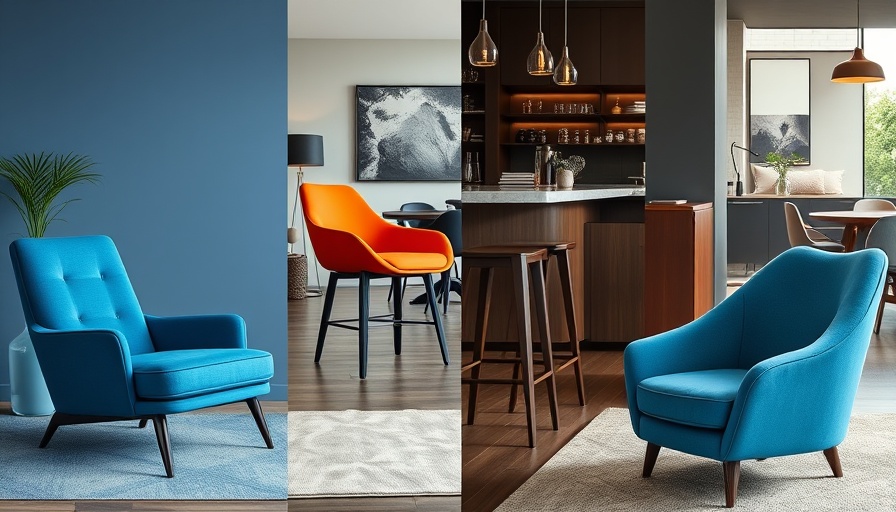
Exploring the Craftsmanship Behind Iconic Chairs at New York Design Week
This year’s New York Design Week showcased an impressive array of chairs that do more than serve a purpose; they inspire conversation and admiration. A chair is not just a piece of furniture—it’s a statement, a blend of function and artistry, as Mies van der Rohe once stated. The diversity of styles and techniques presented this year reflects the timeless challenge that designers face: to create a functional yet aesthetically pleasing object.
The Legacy of Joaquim Tenreiro: A Brazilian Visionary
One standout exhibit featured the magnificent work of Joaquim Tenreiro at Bossa Annex. Known as the 'god of Brazilian furniture', Tenreiro's ethos revolved around employing traditional craftsmanship methods with local materials. His rattan chaise, adorned with luxurious wood, embodies Brazilian modernism in its purest form. This exhibit, titled “Inventing a Modern Tropical Living,” is a vibrant tribute to Tenreiro's contributions in the mid-20th century and serves to rekindle interest in materials that modernists initially overlooked.
Antoni Gaudí's Furniture: The Intersection of Art and Function
The festival also featured Antoni Gaudí’s Batlló Chair, a remarkable piece that has rarely been available in the U.S. until now. This dining chair, reissued in a limited edition, showcases Gaudí’s unique design approach, merging the architectural with the artisanal. The chair represents not just utility but also artistic expression—the backrest reminiscent of a hammerhead shark is a testament to Gaudí's imaginative vision. Such designs challenge our perceptions of what furniture can be, integrating aesthetics and cultural resonance.
Cultural Connections: The Stories Chairs Tell
Chairs tell the stories of their makers and cultures. At New York Design Week, the stories attached to each piece invite us to explore deeper meanings behind their aesthetics. From Tenreiro’s dedication to Brazilian craftsmanship to Gaudí’s unique integration of nature and architecture, these designs reflect broader cultural narratives. They urge us to appreciate the craftsmanship involved, reminding us that even the simplest elements of our lives can hold significant meaning.
Join the Conversation: Your Next Steps in Design
As we admire these impressive showcases, it’s important to reflect on how design impacts our daily lives. Whether you’re redecorating your home or simply appreciating the beauty around you, consider the stories that furniture tells. Engaging with local crafts and honoring historical influences can enhance our living spaces and foster community connections. This Design Week encourages us all to recognize the intersection of art, community, and everyday life.
 Add Row
Add Row  Add
Add 




 Add Row
Add Row  Add
Add 

Write A Comment